Musical Storm: The Stephen Michael Schwartz 2nd RCA Album Sessions-EXCLUSIVE INTERVIEW PT. 5
Recording with Elton John's long-time rhythm section, eventual multi-Grammy-winner, David Foster, and a producer who worked with Paul McCartney. What could go wrong?
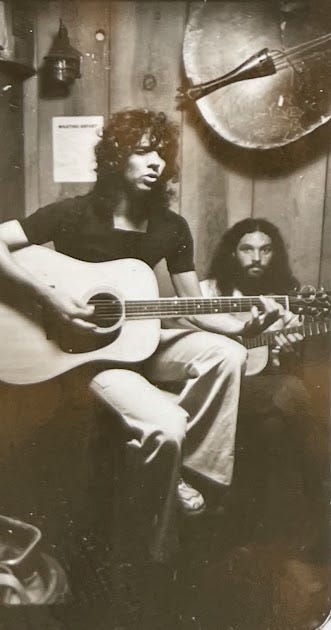
When we last checked in on Stephen (in Exclusive Interview, Pt. 4), he was planning a post-album tour following the summer 1974 release of his self-titled debut LP, Stephen Michael Schwartz, on RCA Records.
It was early 1975, and gathering a touring band was Job 1 for a gig opening for multi-Grammy-winner, Paul Williams, in Bellingham, WA in March of that year.
This was after the hunt for a financial manager ended with the guy taking off with Stephen’s money. The Bellingham show promoter never paid our 20-year-old singer/guitarist, and, in a gutsy move, Stephen told his RCA boss he wanted a change in producers for his second album!
Of course, the debut album’s experienced, hit-making producer was a good friend of Stephen’s RCA boss!
With heralded UK producer and record mogul, Mickie Most, tapped by Stephen as one of his choices for knob-twiddling for Album #2, he considers a second choice, in late Spring 1975…….
PART 5:
“I can’t remember who suggested that Chris Huston and I meet with the prospects of Chris producing my next album. Chris was, at this time, primarily known as a top-notch engineer [dating all the way back to 1966] with a string of successful albums under his belt for The Who, Led Zeppelin, Todd Rundgren’s late ‘60s Nazz, Patti Labelle, and Eric Burdon.
“I didn’t know this at the time, but Chris and John Lennon [three years older than Huston] were childhood buddies, having grown up in Liverpool.
“I should have known, upon our first meeting, from that unique English accent right out of the Hard Day’s Night film!”

“Chris was looking for a project where he could jump into the producer’s seat. He had the chops and the knowledge (he also played guitar), and I was happy to meet with him because of his reputation.
“The next person I met with was Eirik Wangberg, known in the business as ‘Eirik The Norwegian.’ Again, I don’t know how we were introduced, but it was a fortuitous meeting. We hit it off right away. He heard my album and thought, although it was a good debut, he could bring something different to my sound, and elevate me as a serious singer/songwriter.
“It didn’t hurt to know that Eirik was Paul McCartney’s mixing engineer on Ram. I loved that album and the sound that Paul and Eirik got on it. It felt less ‘pop’-created and more organic. Of course, that was Paul McCartney!!”
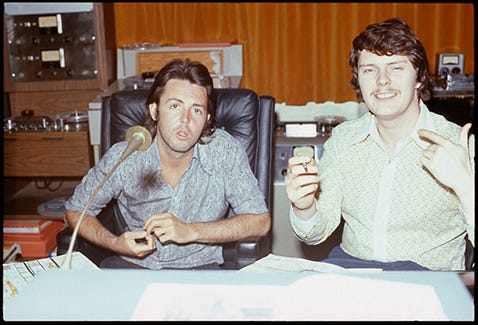
“Eirik said he’d like to bring in some musicians who weren’t ‘studio cats,’ but who understood how to bring something unique and different to a song.
“I liked his pitch. I liked him. I said, ‘Let’s do it!’”

Recording Session Log, Hollywood: Summer 1975, RCA Records, 6363 Sunset Blvd., Studio A
On a typical day during the recording of his second album for RCA, Stephen drove his 1962 Nash Metropolitan to the studio from his nearby apartment:
“I remember parking in the underground lot, (I was given my own parking space while recording there...another perk). I came around the corner, entered through the side glass door (not on the Sunset Blvd. side), which is where I met, on one occasion, Ray Charles.
“It was a brief encounter, though memorable, as I held the door open for him and his assistant. They were leaving; I was just arriving. ‘Hello, Mr. Charles,’ I said, like I did this everyday. He smiled in the direction of my voice as his assistant led him carefully out.
“Two thank-yous came my way, one from his aide, and then he turned his head in that Ray Charles manner and said, ‘Thank you.’ Nothing grandiose; just another day in Hollywood. But, I went into my session a changed person. For a few seconds I held the door open for Greatness.”
Perfect Timing: Elton John’s Rhythm Section
“The next time Wangberg and I got together, I played him some of the new songs I had written to get his opinion, and give him a feel for the shape of the album. He mentioned bringing in friends, bassist Dee Murray and drummer, Nigel Olsson (Elton John’s rhythm section), to help the sound and feel of the project.”
It might be helpful, at this point (in, roughly, late Spring/early Summer ‘75), to offer some cultural context: Murray and Olsson had been Elton’s touring and recording rhythm section from 1970-75. The Elton John Band (with Murray and Olsson) recorded the Captain Fantastic and the Brown Dirt Cowboy album in Colorado in August 1974 (the month RCA released Stephen’s debut self-titled album).
Captain Fantastic was released by MCA in May 1975, about the time Stephen was interviewing prospective producers and planning the recording of Album #2; just before entering Colorado’s Caribou Ranch Recording Studios again in June 1975 to record Rock of the Westies, Elton fired Murray and Olsson.
The timing might have been right on the money for all involved.
Stephen gave his perspective (and clearest memory), recently: “I'm pretty certain that after meeting with, and choosing a new producer (Wangberg), we began the second album in the middle of 1975.
“It could very well have been the first of Nigel and Dee’s session work. They were friends of Eirik, and the story is that once everyone knew Nigel and Dee were available for session work, their beepers never stopped ‘beeping’! I was lucky to get them when I did. As far as ‘post-Elton gigs,’ I'd say it's a pretty good bet it was either the first one or close to it.
“I wish I could get a hold of those unreleased tapes [that RCA owns]. I'm sure they sound fantastic!
Related: In early August 2023, musician and YouTube content creator, Jon Blackstone (whom Dee and Nigel played with in the early ‘90s), offered his thoughts on why Elton fired Dee and Nigel (based on Jon’s interviews with them):
“I suggested my friend, David Foster, on keyboard. David, who agreed to doing the sessions, suggested we add a young guitarist he worked with by the name of Lee Ritenour.
“I also had a good friend, Mike Brewer, a wonderful guitarist, to round out the players. We were set. Now to get approval from my record company.
“I got the ‘go-ahead’ from Don Berkheimer and the RCA legal team to move forward. It was easy…maybe too easy. We got a start date to go back into the studio (RCA Studio A on Sunset Blvd near Vine St.) for my second record, around the middle of 1975. I was so excited.
“This time I felt very secure and certain of what I was doing, plus my basketball hoop was still up in studio A! It was, I surmised, a sign that all was right with the world…my world.”
All the photos below depicting the RCA Studio A sessions from the recording of his second album are from Stephen’s personal collection, and are previously un-published:
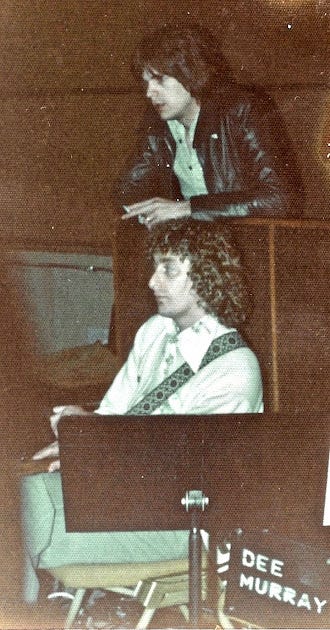
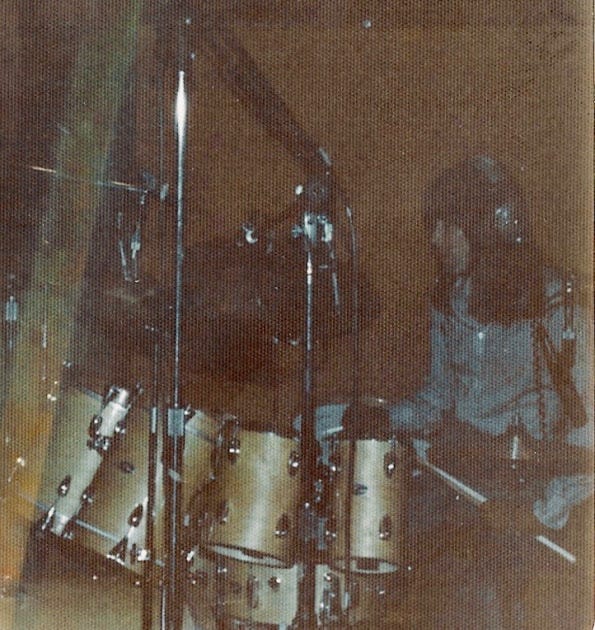
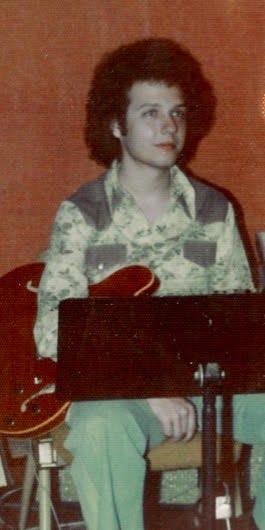

“After a week or so in the studio and setting down four basic tracks, one of which was a cover of Smokey Robinson’s ‘I Second That Emotion,’ I got a telegram from RCA telling me my record deal was terminated (at their discretion), due to lack of sales [of the first album].
“I’m sure there were legal papers sent to my attorney making it official, but I don’t remember, nor did I care.
“I only remember devastation and darkness surrounding me.”






